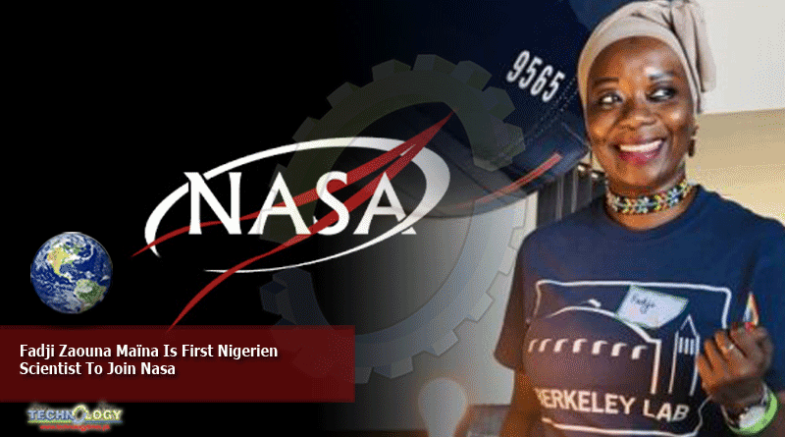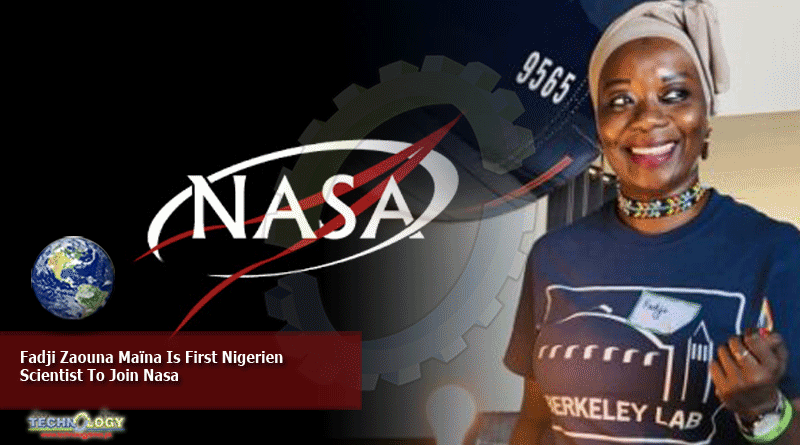Fadji Zaouna Maïna, First Nigerien Scientist To Join Highly Prestigious National Aeronautics & Space Administration (Nasa) In U.S

Has fulfilled a childhood dream while becoming a national symbol.
Since she joined the US space agency on 27 August, congratulations have been pouring in from all sides. Nigerien President Mahamadou Issoufou even called her on 2 September to congratulate her and to say that she “is a national pride, and a role model for the youth of Niger”.
‘I’ve pushed the limits’
The 29 year-old scientist is fully aware of what she represents. “I pushed the boundaries, I made it possible and I made a whole country proud,” she said. “The chances for a girl like me, born and raised in Zinder (Niger), to become a scientist at a well-known institution like NASA are almost zero.”
Dr Fadji Zaouna Maïna, hydrologist and first Nigerien scientist to have joined NASA.
At the age of 29, Fadji Zaouna Maïna is the first Nigerien scientist to join NASA. A success that has made her a role model in the country.
Fadji Zaouna Maïna, the first Nigerien scientist to join the highly prestigious National Aeronautics and Space Administration (NASA) in the United States, has fulfilled a childhood dream while becoming a national symbol.
Since she joined the US space agency on 27 August, congratulations have been pouring in from all sides. Nigerien President Mahamadou Issoufou even called her on 2 September to congratulate her and to say that she “is a national pride, and a role model for the youth of Niger”.
‘I’ve pushed the limits’
The 29 year-old scientist is fully aware of what she represents. “I pushed the boundaries, I made it possible and I made a whole country proud,” she said. “The chances for a girl like me, born and raised in Zinder (Niger), to become a scientist at a well-known institution like NASA are almost zero.”
“Since I was a child, I always wanted to work at NASA. But when you are born in Zinder, you don’t necessarily have access to information, as is the case in Niamey. So I had this dream, but I didn’t know where to start, or what path to take to make it come true,” Fadji Zaouna Maïna tells The Africa Report/ Jeune Afrique.Today, she sees herself more as a pioneer than a symbol. “I want more and more women of Niger to work in the field of science, to follow the same path as me and to quickly join me at NASA.”
From Zinder to Berkeley
Her path towards success begins in Zinder. After excelling at school – she skipped several classes – she obtained her secondary degree at the age of 16. “My family has always supported me in my studies,” she insists. Ever since I was little, everyone around me has always been encouraging me.”
At the same time, the young schoolgirl from Zinder began to get involved in politics. Elected as a junior deputy in Niger’s National Youth Assembly, she was an advocate for the education and empowerment of girls. At the time of her higher education, she chose to study hydrology “to participate in improving the conditions of access to drinking water in Niger”.
After a degree from the University of Fez in Morocco, she continued her studies in France at the University of Strasbourg. There she obtained her PhD in hydrology. She then worked in several prestigious laboratories, notably at the French Alternative Energies and Atomic Energy Commission (CEA), before joining the Energy Geosciences Division of the University of Berkeley in the United States.
Climate warning system
Her work on the combined impact of climate change and pollution on water resources earned her a place in the prestigious Forbes 2020 ranking of the 20 scientists under 30 years old with the most ambitious research projects.
It was in November 2019 that she was spotted by NASA headhunters. She had just published a highly acclaimed article analysing regional vulnerabilities to climatic extremes, with a special focus on the case of California, which has been ravaged by wild fires.
At NASA, she joins the team working on data from the Gravity Recovery Climate Experiment (GRACE) satellite. “I will try to better understand the water cycle and the evolution of water resources in the context of climate change by using mathematical models and data from NASA satellites,” xplains the scientist.
Although she is not currently planning to leave the United States to return to Niger, Maïna maintains strong ties to her home country. She works with a local NGO, OASIS, which works in education and women’s emancipation. She also accompanies young researchers from the University of Niamey in their work.
And while Niamey is facing very serious flooding – as of 7 September, 57 people were killed and nearly 300,000 people were affected – it is also sounding the alarm. “These floods, which are exceptional today, could be the norm in the future,” she warns. “We should build a resilient environment by taking into account the interactions between climate, people and the environment.
This news was originally published at theafricareport.com
